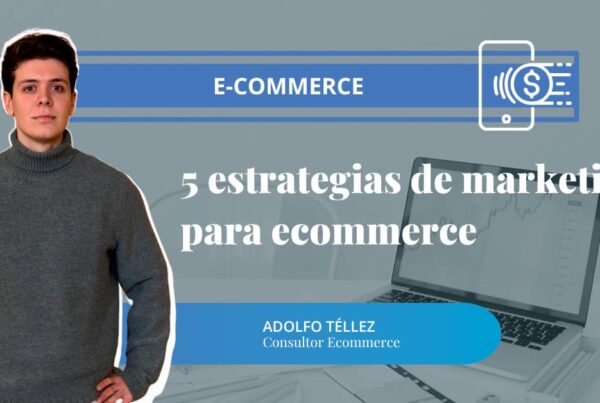Today, e-commerce is one of the most popular forms of business and has become an essential tool for many brands. In this article, we’ll explore what e-commerce is, the different types of electronic commerce, its advantages and disadvantages, and finally, 5 effective e-commerce strategies that any business can implement.
What Is E-commerce?
E-commerce, or electronic commerce, is a business model that involves buying and selling products over the Internet. The term “e-commerce” also refers to each online store that operates under this model.
E-commerce has been one of the most disruptive sectors in recent years, revolutionizing traditional retail by offering an unprecedented level of convenience and personalization. Thanks to this, companies can reach a wider audience and offer their products anywhere in the world.
Types of E-commerce
There are different ways to classify e-commerce types, but generally, they can be divided based on the target audience or the business model.
Based on the Target Audience
- B2C (Business to Consumer): These are e-commerce businesses that sell directly to the end consumer. It’s the most common type of e-commerce, covering everything from fashion stores to online hardware shops.
- B2B (Business to Business): These are e-commerce platforms whose main customers are other companies — for example, office supply stores or industrial providers.
- C2C (Consumer to Consumer): This model has grown with the rise of online resale platforms, allowing consumers to sell directly to other consumers, typically second-hand products. A good example of this type is Wallapop.
In addition to these three types of e-commerce, other models include C2B (Consumer to Business), G2C (Government to Consumer), B4B (Business for Business), and B2E (Business to Employee).
Based on the Business Model
- Own Online Store: The simplest e-commerce model — it’s a digital version of a brand’s physical store, selling its own products. It can be exclusively online or complement physical locations.
- Marketplace: A marketplace is like a “mega-store” that hosts multiple sellers. A well-known example is Amazon, where anyone can sell products in exchange for a commission.
- Dropshipping: From the customer’s perspective, dropshipping looks like a standard online store. However, instead of managing inventory, the seller promotes products while a third party handles shipping.
- Affiliate Marketing: In this model, third parties (affiliates) promote products or services in exchange for a commission. They provide referral links to direct potential buyers to the store where the sale takes place. Amazon is one of the most recognized companies using this model.
- Subscription Model: Instead of selling single products, this model encourages consumers to pay a monthly fee to receive recurring deliveries. “Subscription boxes” are a popular example used across many industries.
Why Is E-commerce an Opportunity for Your Business?
Understanding why this business model is a great opportunity for your company is key. Here are some benefits that e-commerce can offer your business:
Greater reach: With an online store, your business is accessible to anyone with an Internet connection, allowing you to reach a global audience not limited by geography.
Lower costs: Running an online store generally costs less than maintaining a physical one, since there’s no need to pay for retail space or in-store staff.
24/7 availability: An online store is always open, allowing customers to shop anytime, day or night.
Scalability and growth potential: Without physical limitations, your business can expand its inventory and reach — increasing overall growth potential.
Pros and Cons of E-commerce
Finally, let’s take a look at the main advantages and disadvantages of this business model:
Pros of E-commerce
- Wider audience: Businesses can reach customers in remote areas or those without access to physical stores.
- Lower operating costs: Online businesses have fewer expenses, avoiding rent, utilities, decor, and other physical store costs.
- Convenience: Consumers can shop anytime, anywhere, offering flexibility and comfort.
- More variety: Online stores can offer a wider range of products compared to physical ones.
- Price comparison: Consumers can easily compare products and prices to find better deals.
- Personalization: Online stores can personalize shopping experiences through recommendations based on purchase history and preferences.
- Better data analysis: Businesses can collect detailed data on consumer behavior to refine marketing strategies.
Cons of E-commerce
- Online fraud: There’s always a risk of scams or fraudulent sellers who fail to deliver purchased products.
- Lack of personal interaction: Without in-person contact, it may be harder to build trust or resolve issues quickly.
- Harder to assess quality: Customers can’t touch or see products physically before buying, which may cause uncertainty.
- Delivery issues: Delays or lost packages are common challenges in online commerce.
- Privacy concerns: Consumers may worry about sharing personal and financial information online.
- Dependence on technology: Technical issues or connectivity problems can disrupt sales.
- High competition: The online market is highly competitive, making it harder for new businesses to stand out.



